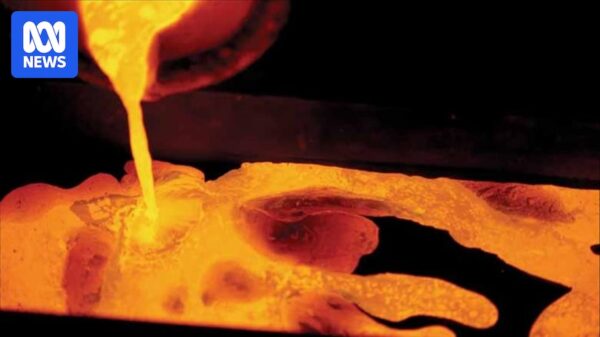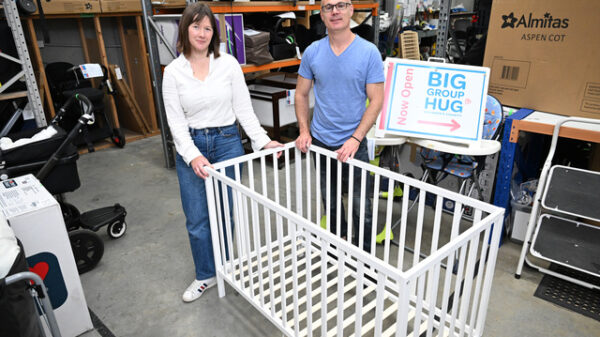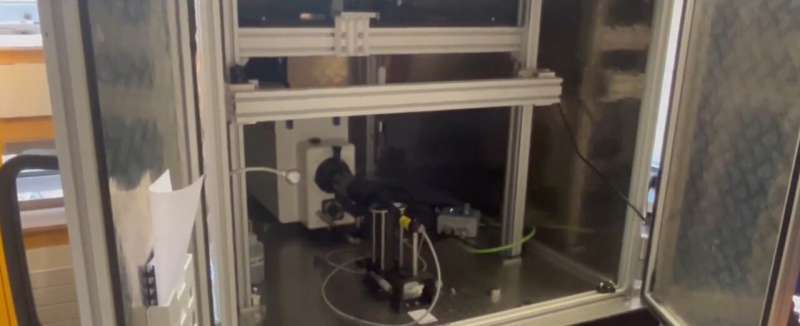Researchers at Trinity College Dublin have developed an innovative machine that enables scientists to observe the behavior of microscopic particles as they collide with surfaces at remarkable speeds. The new device, known as the Laser Ablation Particle Acceleration and Observation (LAPAO), is the only one of its kind in Europe and represents a significant advancement in material science.
The LAPAO machine can accelerate particles ranging from 10 to 60 microns in size to velocities of up to 1,000 meters per second, which is nearly three times the speed of a bullet. To capture these high-speed interactions, a special camera records events at an astounding rate of one billion frames per second. This capability allows researchers to determine whether particles stick, bounce, or break upon impact—insights crucial for enhancing material properties.
Understanding these interactions is vital for engineers aiming to improve materials and coatings used in various applications, including aircraft parts, medical implants, and protective machinery layers. The research team, part of the Science & Technology in Advanced Manufacturing (STAM) group, has focused on refining a process called “Cold Spray.” This method enables the deposition of materials without melting them, representing a significant leap forward in manufacturing technologies.
Leo Devlin, a Ph.D. candidate at Trinity and a key member of the STAM team, emphasized the machine’s impact. He stated, “Thanks to our machine, we can now obtain material parameters for micro-particles undergoing ultra-high strain rate plastic deformation, which is something that modelers have been attempting to predict for a very long time.” This breakthrough allows for real-time visualization of material interactions, enabling the optimization of the cold spray process for specific materials.
To date, the LAPAO has successfully identified critical velocities for materials such as aluminum, Ti64, and high-entropy alloys, which are increasingly utilized in the electrical and automotive industries. These materials offer lightweight solutions with enhanced resistance to wear and corrosion, making them highly desirable in modern manufacturing.
Advancements in Cold Spray Technology
In recent years, cold spray technology has advanced with the introduction of laser-assisted and electromagnetism-assisted variants. These innovations enhance the microstructure and performance of deposited materials. Cold spray allows engineers to form metallic coatings on substrates without reaching the melting point, which simplifies the manufacturing process.
Plastic deformation plays a crucial role in cold spray technology. Each particle deforms upon impact, initiating a complex bonding process that leads to strong adhesion between the substrate and the particles. Prof. Shuo Yin, also from the STAM team, noted the expanding applications of cold spray beyond aerospace: “Today, beyond its traditional use in the aerospace industry, cold spray is also being applied in the nuclear, automotive, and broader manufacturing sectors.”
The LAPAO machine also holds potential for simulating high-velocity microscale impact events, such as debris impacts on satellites. This is increasingly relevant as the amount of space debris continues to rise, posing risks to valuable space equipment.
Prof. Rocco Lupoi highlighted the broader implications of this technology, stating, “Any particle impact can now be studied using any real shape.” He mentioned an ongoing project called MadeCold, which focuses on developing a new type of cold spray based on electrostatic acceleration of single particles. The LAPAO is already providing critical data on the velocities required for effective bonding, along with insights into the relationship between particle material and morphology.
The development of the LAPAO machine marks a significant milestone in material science research, providing researchers with the tools necessary to explore micro-particle behavior in real-time. This advancement has the potential to revolutionize the way engineers design and manufacture advanced materials, leading to innovations across various industries.




























































